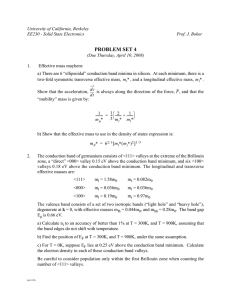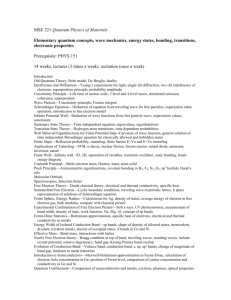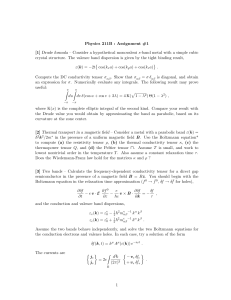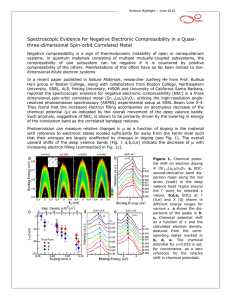PHYSICS 244 NOTES
advertisement
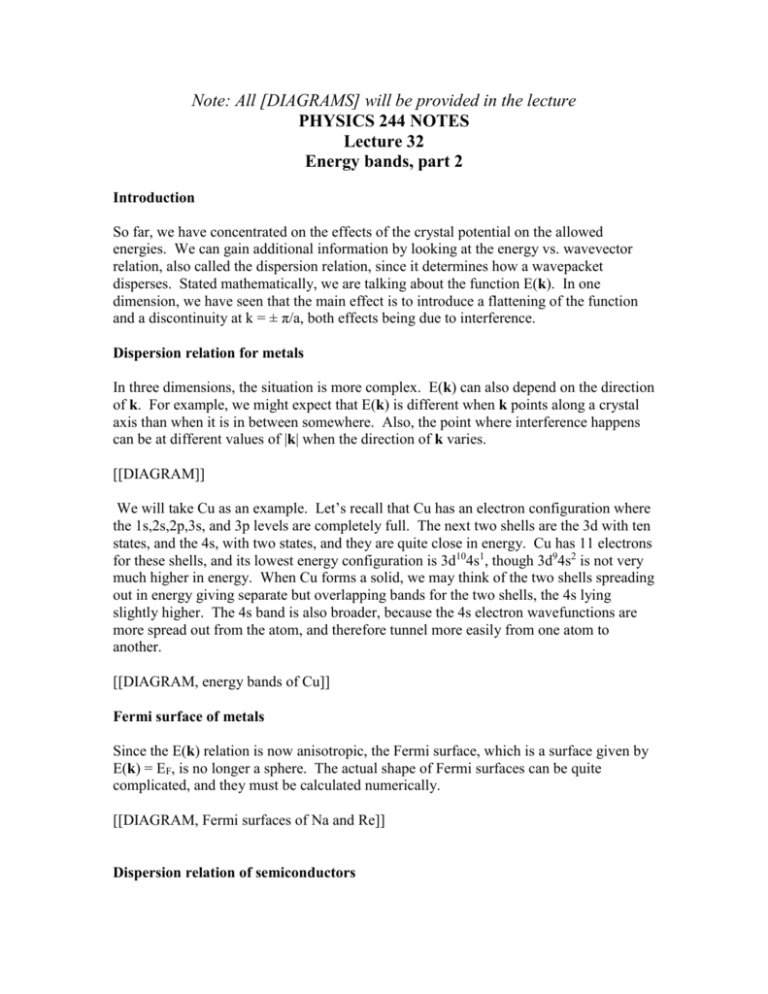
Note: All [DIAGRAMS] will be provided in the lecture PHYSICS 244 NOTES Lecture 32 Energy bands, part 2 Introduction So far, we have concentrated on the effects of the crystal potential on the allowed energies. We can gain additional information by looking at the energy vs. wavevector relation, also called the dispersion relation, since it determines how a wavepacket disperses. Stated mathematically, we are talking about the function E(k). In one dimension, we have seen that the main effect is to introduce a flattening of the function and a discontinuity at k = ± π/a, both effects being due to interference. Dispersion relation for metals In three dimensions, the situation is more complex. E(k) can also depend on the direction of k. For example, we might expect that E(k) is different when k points along a crystal axis than when it is in between somewhere. Also, the point where interference happens can be at different values of |k| when the direction of k varies. [[DIAGRAM]] We will take Cu as an example. Let’s recall that Cu has an electron configuration where the 1s,2s,2p,3s, and 3p levels are completely full. The next two shells are the 3d with ten states, and the 4s, with two states, and they are quite close in energy. Cu has 11 electrons for these shells, and its lowest energy configuration is 3d104s1, though 3d94s2 is not very much higher in energy. When Cu forms a solid, we may think of the two shells spreading out in energy giving separate but overlapping bands for the two shells, the 4s lying slightly higher. The 4s band is also broader, because the 4s electron wavefunctions are more spread out from the atom, and therefore tunnel more easily from one atom to another. [[DIAGRAM, energy bands of Cu]] Fermi surface of metals Since the E(k) relation is now anisotropic, the Fermi surface, which is a surface given by E(k) = EF, is no longer a sphere. The actual shape of Fermi surfaces can be quite complicated, and they must be calculated numerically. [[DIAGRAM, Fermi surfaces of Na and Re]] Dispersion relation of semiconductors The electron configuration for Si is 1s22s22p63s23p2. 3s and 3p are not too far apart in energy. There is one additional complication in Si, which is that the unit cell contains two atoms, so we must think of the bands as deriving from a Si2 molecule, so, just as in our discussion of the H2 molecule, and there is a bonding band and an antibonding band. [[DIAGRAM, energy bands of Si]] Si has a gap of 1.1 eV and it is an indirect gap. There are three valence bands which correspond to the bonding p-states, and a conduction band which comes from the antibonding s-states. On every important point is that there are six conduction band minima and these minima are not at k=0, which is where the valence band maximum is. Si is an indirect band gap material. This has very important implications for optoelectronic devices, as we shall see. At T=0, the valence band is completely full and the conduction band is completely empty, and the material is an insulator. (σ is very small). We can speak of the effective mass of an electron in the conduction band . This is defined by 1/m* = (1/ħ2) d2E/dk2 The derivative must be evaluated at the minimum. m* = 0.92 me and m* = 0.19 me for Si, depending on whether we go along or perpendicular to the axis. m* = 0.066 me for GaAs and get as small as m* = 0.015 me for InSb.






